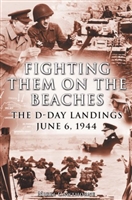 Fighting Them on the Beaches: The D-Day Landings. Cawthorne.
Fighting Them on the Beaches: The D-Day Landings. Cawthorne.
Fighting Them on the Beaches tells the story of one of the largest and most meticulously organized seaborne invasions in the history of warfare – the Allied Landings of June 6, 1944: D-Day.
As the parachutists and glider troops of the US and British airborne divisions went in on the night of June 5, Allied shipping began massing out in the Channel.
As down broke on June 6, waves of assault craft hit the Normandy beaches. British, American, Canadian, polish and Free French troops began to stream ashore to storm the defences of the Atlantic Wall in the teeth of overwhelming enemy firepower.
By midnight on D-Day 150,000 Allied troops were ashore and the process of consolidating the beachheads and pushing inland had begun.
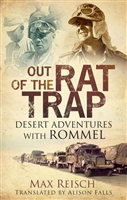 Out of the Rat Trap: Desert Adventures with Rommel. Reisch.
Out of the Rat Trap: Desert Adventures with Rommel. Reisch.
For the Austrian Max Reisch, pioneer international motorist and writer of the 1930s, World War II offered yet more opportunities for adventure. Here is his lively account of his time with a vehicle maintenance unit of the Afrikakorps in Libya, Egypt, and Tunisia. On forays into the desert at the wheel of a captured Jeep, searching out wrecked vehicles for spare parts, he visited the fabulous oasis of Siwa and dug his way out of the sinister minefield of Minqar Qaim. Seeing German defeat as inevitable, he hatched several escape plans and finally, with no experience of the sea, acquired a dilapidated fishing boat and some rudimentary navigation skills. He avoided capture at Tunis and, despite damage to the boat, set sail for Sicily together with seven comrades (and one small dog). Running the blockade of Allied warships and weathering a sudden storm, his motley crew succeeded against the odds.
 Turning The Tide. Cawthorne.
Turning The Tide. Cawthorne.
The Second World War was the final global conflict of the twentieth century. It involved more combatants, and a wider range of battlefield terrain than any other conflict in history, from the frozen plains of Russia to the Libyan desert, and from the depths of the Atlantic to the skies over Britain. Turning the Tide examines the progress of the war, from the British evacuation of Dunkirk, an operation unparalleled in history, to the final battle amid the ruins of Berlin. Types of battle considered include airborne assault (Crete), amphibious assault (Iwo Jima), armoured (The Battle of the Bulge), aerial (Battle of Britain), and the battles for two cities (Stalingrad and Berlin
 United States Army At War 9/11 Through Iraq. Franks.
United States Army At War 9/11 Through Iraq. Franks.
Since 1775, the United States Army has risen to every challenge from Lexington, through regional and world wars, and, more recently to the mountains of Afghanistan and the streets of Baghdad. The men and women who have served America and the cause of freedom since our homeland was attacked on September 11, 2001, like their forbears have answered their country’s call with honor, professionalism, selflessness, and valor. These men and women have shown courageous initiative and resolve in the ongoing evolution of global affairs. I am honored to serve with them. I echo their thanks for the support of their families and the many other citizens of our great nation who have stood with us."
General Franks commanded the United States Central Command from July 2000 to July 2003. He was responsible for planning and executing the campaigns in Afghanistan and Iraq.
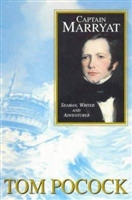 Captain Marryat: Seaman, Writer and Adventurer. Pocock.
Captain Marryat: Seaman, Writer and Adventurer. Pocock.
Frederick Marryat was a novelist, for both adults and children, between Jane Austen and Charles Dickens. He was also known as Captain Marryat, naval hero of the great war with France, who went on to become a celebrated figure in Dickens' literary circle. A man about town, a journalist, duellist, courtier, and an acutely observant traveller in the United States, he finally settled as a farmer deep in the English countryside. This is his biography. Marryat's life was as extravagant as anything in his books.
As a boy he went to sea with Lord Cochrane, a dashing frigate captain, and saw action in several engagements. He fought the Americans in 1812, but was later lionised by them as a famous author - only to be reviled for helping to suppress a French-Canadian rebellion. A man of charm and wit,Marryat also showed a hot, violent temper and was fined for brawling in London streets.
Spending his way through three inherited fortunes, making and wasting huge earnings from his writing, he finally gambled away his smart London house to become a farmer in Norfolk. There, he planned house parties for his famous friends, but what transpired in that remote corner of England forms an appropriate but poignant surprise conclusion.
 The Gun. Chivers
The Gun. Chivers
At a secret arms-design contest in Stalin’s Soviet Union, army technicians submitted a stubby rifle with a curved magazine. Dubbed the AK-47, it was selected as the Eastern Bloc’s standard arm. Scoffed at in the Pentagon as crude and unimpressive, it was in fact a breakthrough—a compact automatic that could be mastered by almost anyone, last decades in the field, and would rarely jam. Manufactured by tens of millions in planned economies, it became first an instrument of repression and then the most lethal weapon of the Cold War. Soon it was in the hands of terrorists.
In a searing examination of modern conflict and official folly, C. J. Chivers mixes meticulous historical research, investigative reporting, and battlefield reportage to illuminate the origins of the world’s most abundant firearm and the consequences of its spread. The result, a tour de force of history and storytelling, sweeps through the miniaturization and distribution of automatic firepower, and puts an iconic object in fuller context than ever before.
The Gun dismantles myths as it moves from the naïve optimism of the Industrial Revolution through the treacherous milieu of the Soviet Union to the inside records of the Taliban. Chivers tells of the 19th-century inventor in Indianapolis who designs a Civil War killing machine, insisting that more-efficient slaughter will save lives. A German attaché who observes British machine guns killing Islamic warriors along the Nile advises his government to amass the weapons that would later flatten British ranks in World War I. In communist Hungary, a locksmith acquires an AK-47 to help wrest his country from the Kremlin’s yoke, beginning a journey to the gallows. The Pentagon suppresses the results of firing tests on severed human heads that might have prevented faulty rifles from being rushed to G.I.s in Vietnam. In Africa, a millennial madman arms abducted children and turns them on their neighbors, setting his country ablaze. Neither pro-gun nor anti-gun, The Gun builds to a terrifying sequence, in which a young man who confronts a trio of assassins is shattered by 23 bullets at close range. The man survives to ask questions that Chivers examines with rigor and flair.
Throughout, The Gun animates unforgettable characters—inventors, salesmen, heroes, megalomaniacs, racists, dictators, gunrunners, terrorists, child soldiers, government careerists, and fools. Drawing from years of research, interviews, and from declassified records revealed for the first time, he presents a richly human account of an evolution in the very experience of war.
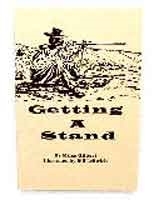 Getting a Stand. Gilbert
Getting a Stand. Gilbert
“An anthology of the writings of buffalo hunters who were engaged in the hide business between 1870 and 1882.” A collection of 18 personal experiences filled with excitement, humour, danger and drudgery. “Diary of a Dodge City Buffalo Hunter, 1872-1873,”. Henry R. Raymond kept a daily record from November 1872 through September 1873. Liberally footnoted which makes the entry all the more interesting.
 British Infantry Equipment. 1808 - 1908. Chappell.
British Infantry Equipment. 1808 - 1908. Chappell.
The period covered by this book begins with the British infantryman entering the Peninsular War (1808-1814) wearing the lethal knapsack equipment of the day, and ends with the introduction of the first equipment set made entirely of woven cotton webbing [the 1908 pattern described in the accompanying Men-at-Arms 108: British Infantry Equipments 1908-80]. Mike Chappel's detailed text presents an in-depth study of British infantry equipments from 1808-1908, in a volume complemented by plenty of illustrations and photographs, including eight full page color plates by the author himself
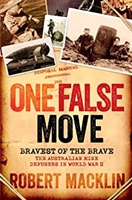 One False Move. Macklin.
One False Move. Macklin.
It is a story of sheer courage and skill - incredible bravery combined with the precision of a surgeon - as these men defused deadly mines, often dropped in residential areas. The detonators were frequently booby trapped by the Nazis, and these Australians and their British colleagues came to recognise the twisted minds and methods of the individual bomb makers as they worked. Both sides played a deadly game of chess as they tried to bluff and outwit the other…
In the ultimate demonstration of skill and bravery, it was the Australian Leon Goldsworthy, specialising in underwater defusing – working at depth, and often by touch alone - who worked out how to defuse the ‘K’ mine, and so made possible the neutralising of the German mine defences before the invasion of Normandy.
 Shooting Fast Shooting Fancy. McGivern.
Shooting Fast Shooting Fancy. McGivern.
One of the best books for the novice or expert. Has more instructions than an intensive training course. Packed with handgun lore & original photos from the first edition, this much-sought-after classic contains a wealth of facts for marksmen everywhere.
"The one best book for the novice or expert. Few books have much dope the average shooter doesn't know. This one does...
Ed McGivern needs no introduction to gun enthusiasts and serious marksmen. For more than 50 years he was revered as one of the top authorities in the field of small firearms. A world champion marksmen who made The Guinness Book of World Records, he trained scores of law enforcement officers and developed a system of teaching that is as effective today as it was when this book was originally published. It resulted from years of experimentation and research conducted by McGivern, who utilized electric timers and other devices to determine the angles and techniques that would produce the fastest, most accurate revolver shooting.
A good handgunner is far better on targets & game than a mediocre rifleman & McGivern's book has more instructions than an intensive training course."
--Kent Bellah, contributing editor of U.S. Handgunner
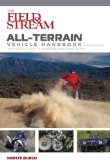 ATV Handbook
ATV Handbook
Overview
“The Field & Stream All-Terrain Vehicle Handbook offers both newcomers and experienced users a handy guide to these useful and extremely popular vehicles.”—American Rifleman
The all-terrain vehicle market continues to be a popular one as more and more outdoor enthusiasts discover how much fun ATVs are to use. The Field & Stream All-Terrain Vehicle Handbook is a comprehensive, in-depth guide that provides valuable, updated information on the machine, including:
Who the top manufacturers are and what models are being offered today
Advice on choosing an ATV for you, your spouse, or your child
Where to go for rider training
Rider safety tips
Maintaining and repairing your ATV
Using an ATV when you go hunting
Whether you’re an avid outdoorsman who needs to travel across rugged wilderness, or who needs an ATV for hauling heavy work equipment, or who simply wants to race or ride for fun, author Monte Burch makes understanding ATVs fast and easy. He even includes information on actual tests of specific models. This is a must-read book for any new or seasoned rider who wants to hit the trails.
 Dear Folks. Matthews
Dear Folks. Matthews
Dear Folks
Paul A Matthews
Paul Matthews is the authoritative figure in the world of black powder cartridge rifle casting, loading, and shooting. Paul's books have taught us and helped us learn more about the great sport. Now for the first time, Paul shares his life experiences during World War II. Follow Paul from his enlistment to V.J. day. This is a must read for all of Paul's fans.
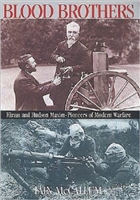 Blood Brothers. The Story of Hiram and Hudson Maxim. McCallum
Blood Brothers. The Story of Hiram and Hudson Maxim. McCallum
Most people don’t realize that Hiram Maxim was a creative and technical genius, and the machine gun was one one of his many notable accomplishments. He was also a character in every sense of the word, and both his brother Hudson and son Hiram Percy made their own significant contributions to firearms technology. Discover the whole story behind one of history’s great firearms inventors!
 Death Between the Lines. Grant.
Death Between the Lines. Grant.
Within twenty minutes three folders arrived on his desk. Pymble stared at their labels…..
Looking inside the covers he noticed that a different Inspector in the CIB had handled each case. Clearly no link had ever been made among the three….
On Anzac Day 1930, Inspector Rex Pymble decided on a whim to join in the Sydney Parade. He had never before marched. His short duty as a Provost in France in August 1918 investigating suspected fraud in a regiment’s mess account had ended in a catastrophe which had returned him, wounded, to England, and thence home and to a resumption of his career in the NSW police.
Anzac Day 1930, however, leads, almost by accident to the re-opening of the original case and to the solution of a chain of other matters (including murders) which just needed to be linked.
Ian Grant, headmaster and military historian, writes a gripping story – a page-turner, set in an era which he knows thoroughly.
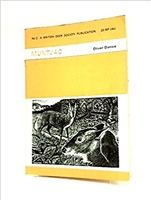 Muntjac. Dansie.
Muntjac. Dansie.
Contents include: Muntjac - Description, distribution map, ageing, communication, photographs, fighting, predators, disease, death, habitat, weather, illustrations, food, social behaviour breeding, locomotion, fraying, gouging and scraping, the muntjac year, the future, bibliography.
 Torpedo Leader. Gibbs.
Torpedo Leader. Gibbs.
Written during the war without benefit of hindsight, this is a remarkable and valuable account. A very personal story, its lucid, exciting and readable narrative describes firstly the author's frustrations as a Staff Officer in Cairo, then his triumphs and disasters as a Beaufort Flight Commander on the anti-shipping operations from Malta in 1942, during which Gibbs' contribution was immense.
 The Australian Soldier. Brown, Le Moal.
The Australian Soldier. Brown, Le Moal.
Almost a century has passed since the signing of the armistice on 11 November 1918. Of all the soldiers who went through that hell on earth, photographs, letters, stories and old uniforms kept in attics are all that is left. Thanks to a collection of more than ten thousand documents, the author allows us to follow these young men with previously unseen photographs. All these faces, sometimes smiling, sometimes serious, have a story to tell. Many collectors have also allowed us access to their most precious objects, the fruit of their relentless research that helps save these objects that went through four terrible years of oblivion and destruction. Finally, being in the era of Internet, many links allow you to retrace the history of your ancestors and their regiments. Following their baptism of fire at Gallipoli in 1915, the Australians arrived on the Western Front in spring 1916. A few months later came the Somme with 24,000 casualties and the tragic events of Fromelles. Then, these tough men, who had travelled so far, continued fighting in France in 1917 and 1918. Since then, the bond of friendship between France and Australia is still going strong.
 Vikings: Raiders from the Sea. Hjardar
Vikings: Raiders from the Sea. Hjardar
From the 9th to the 11th century, Viking ships landed on almost every shore in the Western world. Viking ravages united the Spanish kingdoms and stopped Charlemagne and the Franks' advance in Europe. Wherever Viking ships roamed, enormous suffering followed in their wake, but the encounter between cultures changed both European and Nordic societies.
Employing sail technology and using unpredictable strategies, the Vikings could strike suddenly, attack with great force, then withdraw with stolen goods or captives. Viking society was highly militarized, honor was everything and losing one’s reputation was worse than death. Offending another man’s honor could only be resolved through combat or blood revenge.
This short history of the Vikings discusses how they raided across Europe even reaching America, discussing their ships, weapons and armor, and unique way of life.
 Churchill's Ministry of Ungentlemanly Warfare: Milton.
Churchill's Ministry of Ungentlemanly Warfare: Milton.
A magnificent story, brilliantly told. Read it!' Anthony Horowitz
Six gentlemen, one goal - the destruction of Hitler's war machine
In the spring of 1939, a top secret organisation was founded in London: its purpose was to plot the destruction of Hitler's war machine through spectacular acts of sabotage.
The guerrilla campaign that followed was to prove every bit as extraordinary as the six gentlemen who directed it. Winston Churchill selected them because they were wildly creative and thoroughly ungentlemanly. One of them, Cecil Clarke, was a maverick engineer who had spent the 1930s inventing futuristic caravans. Now, his talents were put to more devious use: he built the dirty bomb used to assassinate Hitler's favourite, Reinhard Heydrich. Another member of the team, William Fairbairn, was a portly pensioner with an unusual passion: he was the world's leading expert in silent killing. He was hired to train the guerrillas being parachuted behind enemy lines.
Led by dapper Scotsman Colin Gubbins, these men - along with three others - formed a secret inner circle that planned the most audacious sabotage attacks of the Second World War. Winston Churchill called it his Ministry of Ungentlemanly Warfare. The six 'ministers', aided by a group of formidable ladies, were so effective that they single-handedly changed the course of the war.
Told with Giles Milton's trademark verve and eye for detail, Churchill's Ministry of Ungentlemanly Warfare is thoroughly researched and based on hitherto unknown archival material. It is a gripping and vivid narrative of adventure and derring-do and is also, perhaps, the last great untold story of the Second World War.
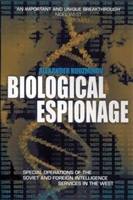 Biological Espionage. Kouzminov.
Biological Espionage. Kouzminov.
Expose of the USSR's clandestine biological-weapons programme Uncovers the covert practices of the Soviet and Russian intelligence services in the West Written with extraordinary insight by a former KGB operative 'Before the publication of Dr Kouzminov's book nobody in the West had any real idea of Department 12's role in penetrating biological research programmes arround the world and stealing secrets of research.' The Daily Telegraph 'Experts and aficionados will enjoy details on how the section was run and how he maintained espionage contacts with illegals in the West, but ultimately this is truly scary stuff...a thought-provoking work.' Library Journal (USA) In the wake of 9/11 the threat of biological terrorism and sabotage has been thrust to the forefront of public consciousness. However, this is far from being a new phenomenon. From World War II onwards, the Cold War powers devoted considerable resources to developing what became known in the military as 'bugs and gas'.
This groundbreaking study lifts the lid on the top-secret Department 12 of Directorate S (Special Operations) - the elite inner core of the KGB First Chief Directorate and its successor, the Russian Foreign Intelligence Service. During the 1980s and early 1990s the department encouraged biological espionage, the planning and preparation of biological terrorism and acts of sabotage. Their work was carried out primarily through 'Illegals' - intelligence operatives who were secretly deployed to the West and covertly operated there, masquerading as citizens of Western countries under assumed names and cover stories. One of its top operatives, Alexander Kouzminov, has decided to break his silence and reveal in depth for the first time the department's tasks, plans and tactics. More disturbingly, he explores what others in the West and the developing world are and could be capable of. In this remarkable book we learn the secrets of the USSR's elite intelligence operatives - secrets which could prove vital in maintaining international security in today's uncertain political climate.
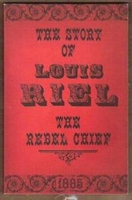 THE STORY OF LOUIS RIEL The Rebel Chief 1885. Collins.
THE STORY OF LOUIS RIEL The Rebel Chief 1885. Collins.
The story of the Riel led rebellion in the Canadian Red River country. Louis Riel, the Canadian religious figure and prophet of a new order in the West who was plagued with bouts of insanity, was a once enigmatic man who has become one of the most closely scrutinized figures in Canadian history, leading to a century-long debate about whether Riel was a great political leader or a madman..... Louis Riel died on the gallows in 1885, and his nation died with him.
 Fiddlers and Whores. Lowry
Fiddlers and Whores. Lowry
'A country of fiddlers and poets, whores and scoundrels', Nelson's famous description of Naples, was a world eagerly embraced by a young Irish doctor called James Lowry who went to sea, apparently, for the sheer sense of adventure and a desire for exotic travel. Sent out to join Nelson's victorious fleet after the battle of the Nile, he was to experience plenty of naval action, and to see more foreign climes than perhaps he had anticipated. Taking part in the successful British campaign against the remnant of Napoleon's army in Egypt brought him into contact with an entirely different culture, but perhaps not as strange as the wooden world of the Navy, which he chronicles with the detached and slightly bemused eye of an outsider. While he found the Navy odd and intriguing, what really engaged his interest (and enthusiasm) was the relaxed sexual mores of Italian society. His memoirs were written at the request of his younger stay-at-home brother, so, untrammelled by any thought of publication, he recounted his adventures with relish and in rather more detail than might be thought proper.While there may be an element of boasting, much of what he describes of naval life in the Mediterranean of Nelson's day rings true, and many unlikely events can be confirmed from other sources.
This fascinating memoir lay lay hidden in the hands of Lowry's family for 200 years before its first publication in 2006.
 Nelson Encyclopedia. Colin White.
Nelson Encyclopedia. Colin White.
Even after two centuries interest in Nelson shows no signs of abating. Indeed, new research continues to reveal previously unsuspected aspects of his life and career; while at the same time hoary old myths, like his wearing a piratical style eye-patch, doggedly persist. In this book an author who is a master of the subject sets out to answer any question about Nelson likely to be raised, either by a casual reference or in a more detailed study of the navy, the wars, or the social history of the period. Entries cover people, ships, places and events associated with the man, and extend to contemporary issues like changing interpretations of his actions and motivation. Arranged alphabetically and fully cross-referenced, every subject is accorded enough length for proper discussion, and each is followed by a suggested reading list for those wanting to pursue the topic further. The book concludes with appendices devoted to a full bibliography, a chronology of Nelson's life and times, and a selection of significant documents, some previously unpublished. Not only an unrivalled companion to every aspect of his career, The Nelson Encyclopedia is also an ideal introduction to the world of the Royal Navy at the pinnacle of its success. Already a success in hardback, this new paperback edition will coincide with the well-publicized events to celebrate the Trafalgar bicentenary.
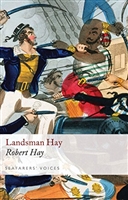 Landsman, Seafarers' Voices. Hay.
Landsman, Seafarers' Voices. Hay.
In 1803, at the age of 14, Robert Hay ran away from home to join the Royal Navy, and for the next eight years experienced the trials and tribulations of a sailors life.Intelligent, agile and willing, he became a boy servant to a series of officers, all of whom helped advance his education as was the practice of the day. But the taxing conditions of life onboard he found detestable and he was, after an action off the French coast, sorely tempted to desert but the well known and ruthless treatment of deserters, if caught, deterred him this time.He was then posted to the East Indies where he was badly wounded and nearly lost a leg before returning home after five years with 14 and fourteen days leave to look forward to. His next ship ran aground off Plymouth and, this time, he took the opportunity to desert but was then quickly taken by a press gang. Terrified of being identified, he managed to escape and reach the Scotland and home.As well as a wonderful yarn, the book is also an impressive description of early nineteenth-century naval life, and his ability as a writer was considerable. His descriptions of his remarkable experiences in the East Indies are full of the flavour of the region, while the sailors natural inclination to drink and debauchery is told with verve. But also running through the narrative are many fine observations on nature and on the human condition. A true and vivid account of the sailors life of this era.
 Midget Ninja and Tactical Laxatives: Bizarre Warfare Through the Ages. Sidnell.
Midget Ninja and Tactical Laxatives: Bizarre Warfare Through the Ages. Sidnell.
Which army used camels disguised as war elephants? Which illustrious warlord was killed by a midget ninja hidden in his latrine? How did live cows dropped by the Soviet air force sink a Japanese vessel? And just what kind of weapon was the Bohemian Ear Spoon? These are just a few of the important questions of military history answered in this book.
‘Midget Ninja and Tactical Laxatives’ is a light-hearted look at some of the most bizarre incidents, weirdest weapons and strangest stratagems to be found in the annals of warfare. Drawn from all periods of history there is something here for every reader with an interest in military history and/or a sense of humor.
Some of the sections included:War Elephants and How to Stop Them (including the infamous blazing pigs)
Ignominious Deaths (e.g. the midget ninja in the latrine)
A Misplaced Sense of Honor (e.g. the sniper who let George Washington live)
Suicide Missions (e.g. mass suicide as a diversion tactic and a case of self-decapitation)
Weird and Wonderful Weapons: (such as the WW2 bat bomb -with real bats)
Stranger things happen at Sea (e.g. million-ton ice ships and death by blocked toilet)
God is on our side (of omens, oracles and the ancient battle stopped by a UFO)
An Army Marches on its Stomach (e.g. the tactical use of laxatives and the Greek army immobilized for 3 days by hallucinogenic honey)
 The Dawns of Tradition.
The Dawns of Tradition.
Lovely book about Japanese culture., including traditions, technology, Bonsai, Noh, Imperial family etc. Illustrated in colour.
 River Monsters. Wade.
River Monsters. Wade.
Called the greatest angling explorer of his generation ( Independent on Sunday ), Jeremy Wade takes viewers where no wildlife program has gone before. Now Wade goes truly beneath the surface, disclosing full details of how he catches each species and recounting the off-camera highlights of his extraordinary life. From his arrest as a suspected spy in Southeast Asia to a plane crash in the rainforest, every page of the Wall Street Journal bestseller River Monsters is packed with adventure. From the heart of the Congo to the depths of the Amazon, Wade reels in fish of staggering proportions and terrifying demeanor for an unforgettable read.
